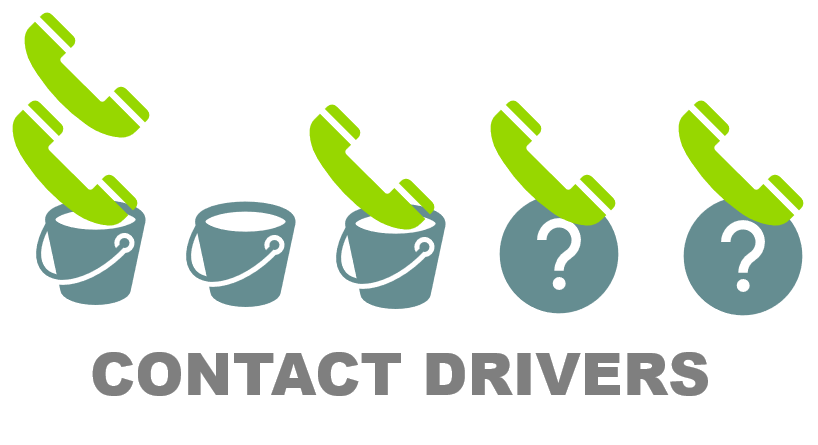,allowExpansion)
Part 1: What's wrong with calling us?
In this 4 part series, we explore some of the challenges faced within call/contact centres and how chatbot technology can help alleviate some of these challenges and provide additional customer insight and increased customer satisfaction.
One challenge realised by many organisations, is how to provide a scalable, high quality service to their customers whilst balancing the need to keep costs under control and call wait times at a minimum. Often the solution is seen as being quite simple, add more agents to your contact centre team or alternatively do the best you can to manage call volumes with a limited call centre team and increased demand on their time and resources.
There are multiple ways to improve this situation both for yourself and your customers: do more with less or do less with more.
Let's begin by breaking down why we have a problem in the first place - our customers want to contact us. Fundamentally, this is our challenge - but equally our opportunity to understand the issue in more detail.
Customers are trying to call us for various reasons, perhaps because they have a query about a product or service and were unable (or unwilling) to find the answer on our website, or in some cases they are contacting us because they have to, e.g., they have a problem with our product or service and require us to resolve it. Both scenarios lead to the same issue, but influence the sentiment and willingness of our customers to engage with us.

Many of our clients have a call centre setup to process inbound queries from their customers, either over the phone or through emails/web forms. There is nothing wrong with this baseline - and in fact many customers prefer to speak with someone due to the assumption that this can be the faster way to resolve their query or issue. In parallel, there is typically a strong investment in an underlying web presence that contains a lot of useful information whether this be related to store opening hours, refund policies, or guides on how to access your account and perform self-service activities. However, even with all of this investment already in place, customers keep calling your call centre.
When analysing contact drivers you will typically notice 8-12 core reasons for someone to call. Many of these do indeed require intervention from your contact centre team, however many of them do not. If these are broken down further, typically ~50% of these are related to information that you have already given an answer for. But why are people still calling to speak with someone? In many cases, it comes down to personal preference - calling you is seen as the fastest route to remediation. Some customers also have no interest in searching your website for an answer as this takes time and requires multiple searches, and multiple page/article reads to get to the answer they are looking for.

Another consideration when focusing the majority of customer support on a contact centre with human agents is how this impacts the understanding of customers. A contact centre typically analyses all inbound phone calls and maps these to defined contact drivers. These could be grouped into high-level containers related to a billing query, trouble accessing an account, general query about new services, and so on. Human nature typically requires a proportionate return from time or effort invested into an activity. Calling a contact centre fits into this mindset. Would a customer spend 30 minutes waiting to speak to someone to confirm that an item was in stock for collection today, or if the store was even closing in the next hour? Probably not. It's these "low value" queries that are often missed from typical call driver reports as the enquiry is not worth the effort of calling. Typically, this does not pose a problem at all; a customer didn't feel the need to call, and therefore didn't call. Problem solved, right?
What if these hidden drivers could be understood in more detail and what "lower value" queries (from the perspective of a call driver only - but perhaps high value queries from overall customer or brand satisfaction) would have been made by customers? The key is making the process to ask a question simple, instant, and accurate. With this paradigm in place, customers typically ask more questions through follow-up queries and are equally encouraged to ask more light-touch questions than they would otherwise warrant doing if they had to call. For example, implementing a chatbot on a website, whereby the chatbot receives a query from a customer looking to propose to their partner on an upcoming flight and wants to know if assistance can be provided for an announcement. In isolation, this doesn't appear revolutionary; however, coupled with numerous other instances observed by the chatbot, such as requests to sing Happy Birthday over the intercom, there is an underlying theme of customer engagement that would be difficult to discover when comparing contact centre call drivers. In many situations, customers may continue to pursue a phone call, but for others, it's an opportunistic request that would be great to fulfil if it was simple but may not necessitate the effort to get in touch over the phone. Depending on the products or services, this is a missed PR opportunity for the brand.

Known by many names, Chatbots, bots, digital assistants, or conversational agents can engage with customers instantly, directing them to relevant information or self-service options on a website. They are not a replacement for contact centers but introduce low-cost, high-value augmentation to existing customer support propositions. This provides an optional interaction point that is faster for customers and cheaper than receiving an inbound phone call. Most customers will attempt to communicate with a chatbot and be satisfied as long as it works as expected, processes their specific query correctly, and offers a more streamlined experience than traditional channels such as speaking to agents.
Not all customers will choose to engage with a chatbot, either because their query is complex or they prefer to speak with a person. Therefore, chatbots will never replace contact centers but can alleviate inbound load from common call drivers. Chatbots also have the unique ability to handle demand spikes, whether seasonal, marketing-related, or due to issues with products and services, maintaining usability regardless of the number of concurrent queries. By effectively filtering queries and providing instant answers, chatbots can become the default contact mechanism, with alternate methods like email, web forms, or calls becoming escalation-based channels.
)
One important virtue of a chatbot is that it can be relatively simple to work out the likely return on investment and align this to your existing contact centre model. If we take an example of a retailer who currently receives on average 2,000 phone calls per day. At a high level this may break down as follows: 2,000 calls per day, of which 50% are related to a customer wanting an update on an existing order. Can we avoid 20% of these calls by signposting customers to a self-service option on the website? Of the remaining 50%, can we avoid 30% of related questions such as store opening hours?
The above statistics are conservative and assume a subset of customers who will choose to engage with a chatbot. Looking at our existing contact centre, we have determined a resource cost of £3 per inbound phone call taken by one of our agents. Using the example above, our chatbot solution might conservatively deflect 500 calls per day from our contact centre. This introduces a real-world value of £1,500 per day and in practical project terms an overall return on investment that is typically less than 1 month.
Why is this a problem that needs solving? Core potential benefits include: Understanding your customer, either earlier in the process or through engaging in alternative channels such as chatbots to uncover opportunities to assist that would not otherwise be picked up by your contact centre.
Dynamically resourcing customer queries with large demand spikes without having to invest in additional contact centre agents for short term demand increases. Providing responses instantly to your customers for common queries. Increasing customer satisfaction by concentrating existing contact centre resources on other customers.
If you would like to find out more about how we can help you enhance your call centre - please get in touch.